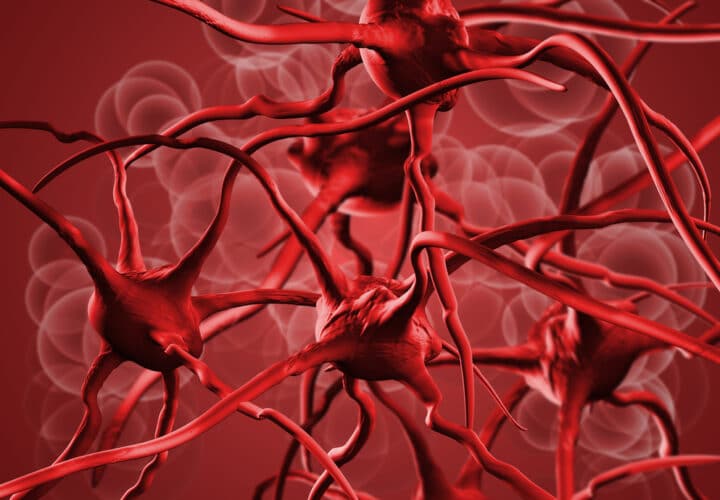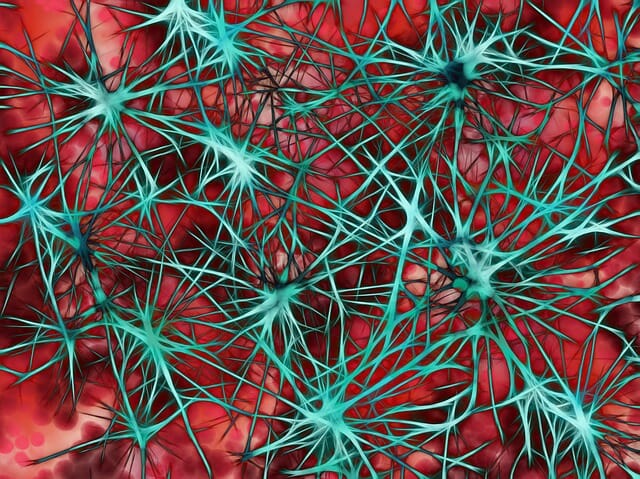A protein called HDAC I is important for folding and storing DNA inside of cells. Scientists found low levels of this protein in Alzheimer’s disease, and also linked it to the levels of beta-amyloid and tau protein plaques.
Like an aged book, DNA in the brain acquires wear and tear during your lifespan. Earlier this year, researchers from Brigham and Women’s Hospital discovered that a unique pattern of mutational signatures in Alzheimer’s may explain why cells begin to malfunction and die. Adding another wrinkle, a cross-university collaboration between researchers uncovered hints that DNA may not be “folded” properly in Alzheimer’s disease.
Since DNA contains so much information, it needs to be organized, folded and indexed correctly. Proteins called histone deacetylases (HDACs) act as “librarians” —they fold and help store the DNA inside of cells. In a new study published in Nature Communications, researchers found that low HDAC activity was associated with amyloid and tau pathology, as well as Alzheimer’s disease.
This work is a collaboration between researchers at the University of Pittsburgh, McGill University, and Harvard University led by Tharick Pascoal, physician and assistant professor of psychiatry and neurology at the University of Pittsburgh’s School of Medicine.
“Approximately one-third of elders who have brain amyloid pathology do not develop Alzheimer’s disease,” said Pascoal. “Now we have evidence of another factor that dictates whether or not the disease will progress further, and it is related to how the brain environment can affect the expression of our genes.”
The study also raises questions against drug trials aimed at reducing HDAC activity, suggesting they may harm rather than benefit the patients.
Low HDAC activity linked to beta-amyloid and tau plaques
To look at the differences in HDAC levels across health and disease, the researchers recruited 25 cognitive healthy young people, 28 cognitively healthy older individuals, 15 people with mild cognitive impairment, and 26 with Alzheimer’s dementia. To add onto the cohort, they also looked at HDAC levels in postmortem brain tissue from 6 individuals with Alzheimer’s dementia and 9 cognitively healthy older individuals.
The scientists injected a molecular dye into the bloodstream that would highlight HDAC activity in the brain under a PET scan. The levels of one specific type of HDAC, called HDAC I, were associated with increased levels of beta amyloid and tau plaques in the brain.
“We believe that HDAC I reduction leads to an increase in gene expression of a gene associated with glial cells and this increase in inflammation leads to cognitive decline,” Pascoal told Being Patient.
Researchers and drug companies have pursued beta-amyloid plaques as a target for treating Alzheimer’s disease for decades. However, it has yet to definitively show that clearing these plaques stops the progression of the disease. This is turning more interest to new approaches, like exploring neuronal DNA and the “recipes” it carries for different brain health-related proteins.
Some experimental drugs in the Alzheimer’s pipeline aim to reduce HDAC activity in order to treat the disease — but this study suggests that approach might be counterproductive and could lead to harm in patients.
As an example, Amylyx Pharmaceuticals Inc is currently in Phase 2 trials testing a small molecule drug called AMX0035 which works to slow HDAC activity.
So far, the company has presented data from a 24-week trial showing that the drug was safe and well-tolerated. The trial is currently being analyzed by the company’s scientific advisors to determine whether they will continue testing for Alzheimer’s in a subsequent trial.
Luckily, engineering drugs to help DNA fold is considerably easier than clearing amyloid and tau in the brain, as Pascoal noted.
“There is a lot of hope for future treatments, and a combination of anti-amyloid therapies with drugs that can rescue the loss of HDACs holds a lot of promise.”




